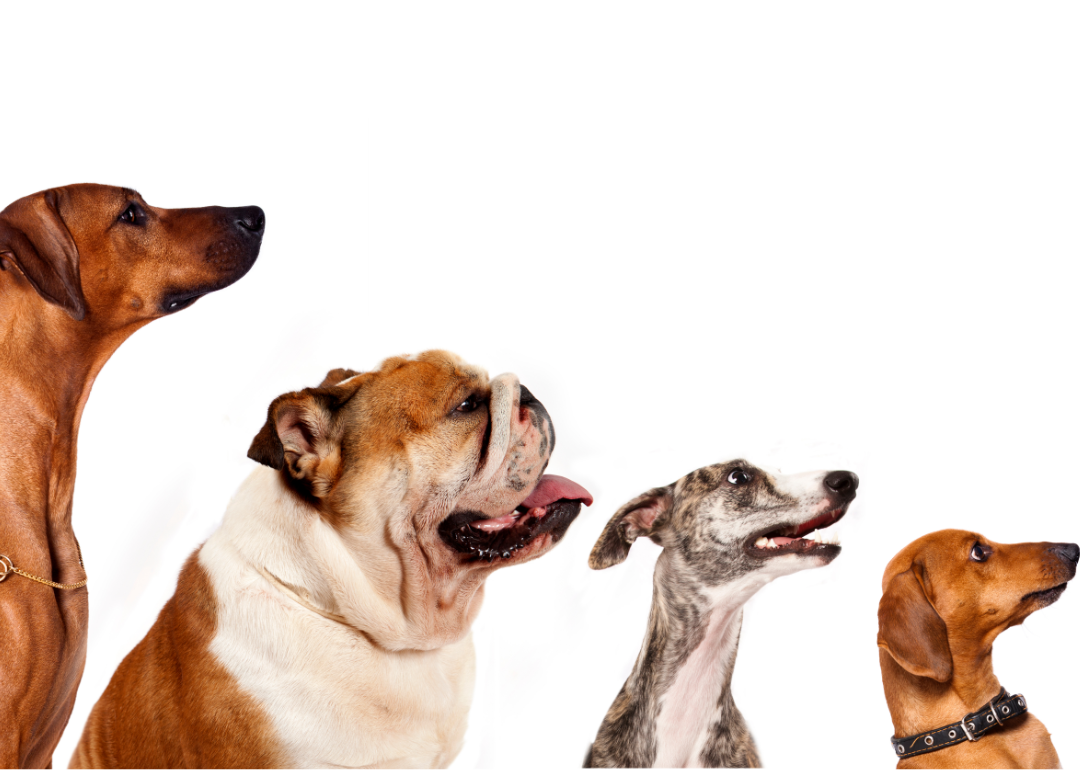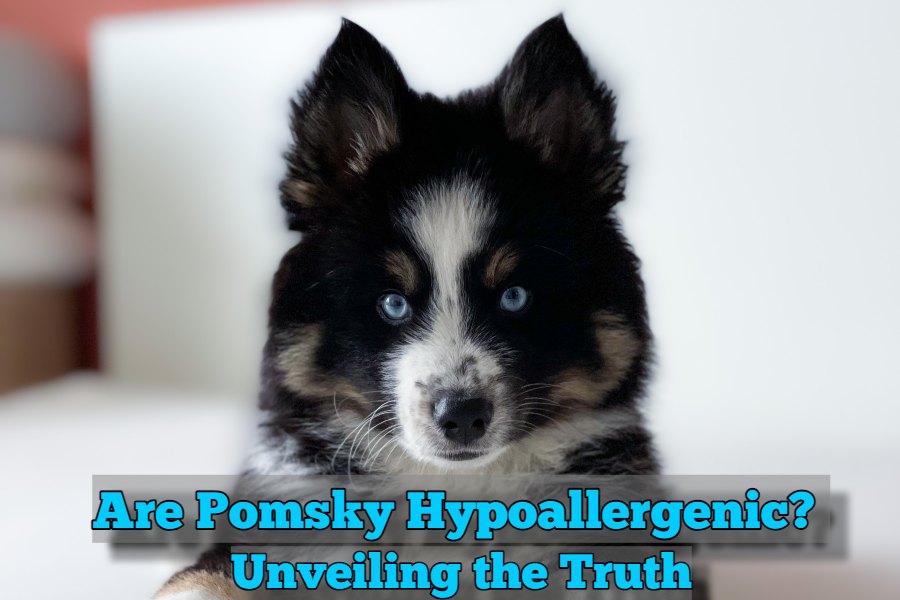Pomskies are not hypoallergenic as they shed their fur. These designer dogs are a mix of Pomeranian and Siberian Husky breeds.
Searching for a blend of cuteness and charm in a pet might lead you to consider the Pomsky. A popular designer dog, the Pomsky is known for its adorable appearance and friendly disposition. Despite their fluffy coats, which many might hope to be low-shedding, Pomskies do shed throughout the year.
This shedding can introduce pet dander into your home environment, which is a common allergen for many people. Potential owners with allergies should note that no dog is truly hypoallergenic, but some breeds may provoke fewer allergic reactions than others. While Pomskies may not be the best choice for allergy sufferers, their intelligence, loyalty, and playful nature continue to draw admiration from dog lovers around the world.
The Allure Of Pomskies
Imagine a furry bundle of joy that captures the hearts of dog lovers worldwide. This is the Pomsky. Pomskies are the adorable result of crossbreeding a Pomeranian and a Siberian Husky. Their fascinating combination of features and friendly nature has made them a sought-after pet. For those sensitive to allergens, the question stands: are Pomskies hypoallergenic?
Pomeranian And Husky Blend
Combining the spitz-like Pomeranian with the mighty Siberian Husky results in a unique dog breed. The Pomsky inherits the small size and fluffy coat of the Pomeranian. It also carries the striking eyes and notable endurance of the Husky. This blend creates an enchanting pet that stands out in the canine world.
Characteristics Attracting Allergy Sufferers
Pomskies are often mistaken for being hypoallergenic due to their mixed heritage. Although no dog is truly hypoallergenic, certain traits make them more suitable for allergy sufferers. These include:
-
Include in the list only traits related to allergens
- Shedding: Pomskies have a double coat that sheds moderately. Regular grooming reduces loose fur in the home.
- Dander Production: They produce less dander compared to some purebreds. Dander is a common allergen.
- Size: Their small stature means less surface area for allergens to cling to.
For many, the low to moderate shedding and reduced dander make Pomskies an appealing option despite allergies.

Credit: stacker.com
What Does Hypoallergenic Mean?
When we talk about hypoallergenic, we’re diving into a world of allergens and reactions. It’s a term often paired with pets, signaling fewer allergic responses in sensitive humans. Hypoallergenic doesn’t mean allergy-free, but rather less likely to cause allergies.
Common Misconceptions
The word hypoallergenic creates a safe haven illusion for allergy sufferers. People think it means a complete absence of allergens. That’s not true. Hypoallergenic pets may still produce dander, saliva, and urine, which carry allergens.
- No pet is 100% allergen-free, even labeled hypoallergenic ones.
- Dander, not just fur, causes most pet allergies.
- Short hair doesn’t equal hypoallergenic.
Realities For Allergy Sufferers
Living with pets and allergies is a balancing act. It’s not only about the type of pet. It’s also about managing the environment. Allergy sufferers need to consider their reactions to a pet’s dander, saliva, or even urine.
| Allergy Trigger | Common Source |
|---|---|
| Dander | Skin flakes from pets |
| Saliva | Pets licking their fur or your skin |
| Urine | Can be airborne from litter or accidents |
Choosing a Pomsky, a cross between a Pomeranian and a Siberian Husky, leans on the idea of having a fluffier companion with reduced allergen concerns. Regular grooming and a clean environment can help manage the allergens around your home.
Analyzing Pomsky Coats
The Pomsky, a mix between a Pomeranian and a Husky, inherits distinctive coat features. Understanding the Pomsky coat is key to knowing if they are hypoallergenic. Let’s delve into their shedding patterns and the potential impact on allergies.
Shedding Patterns
Pomskies have thick, fluffy coats that tend to shed. Their shedding can be heavy especially during seasonal changes. There are two primary shedding seasons:
- Spring: They shed their winter coat.
- Fall: They prepare for colder months ahead.
Some Pomskies might shed consistently throughout the year. Regular grooming is essential to manage their shedding.
Impact On Allergies
Although no dog is 100% hypoallergenic, some breeds cause fewer allergies. Pomskies are not hypoallergenic. Their shedding releases dander and saliva that can trigger allergic reactions.
However, with regular grooming and cleaning, some allergy sufferers may tolerate living with a Pomsky. It’s vital to spend time around the breed to see how one’s allergies react before making a commitment.
Note: Each person’s allergies are unique. A hypoallergenic breed for one may not be for another.
Managing Allergy Triggers
Do you love Pomskies but worry about allergies? Managing allergy triggers is key. This section guides you on how to live with your furry friend comfortably.
Grooming Practices
Pomskies have thick coats that can trap allergens. Regular grooming reduces this risk. Brush them often to keep fur from spreading. Bathing them twice a month is wise. Use hypoallergenic shampoo. This practice helps manage dander, a common allergy trigger.
- Brushing: Daily or several times a week
- Bathing: Every two weeks with gentle shampoo
- Clean their bed: Wash it weekly
Environmental Controls
Keep your home allergen-free with simple steps. Air purifiers capture dander. Vacuum carpets regularly using a HEPA filter vacuum. Wash your hands after petting your dog to avoid spreading allergens.
| Action | Benefit |
|---|---|
| Use air purifiers | Removes pet dander from the air |
| HEPA vacuum | Clean floors without allergens |
Remember, no dog is 100% hypoallergenic. But with smart grooming and clean habits, Pomskies can still be your best friends.
Alternative Solutions For Dog Lovers With Allergies
Are you a dog lover with allergies searching for a four-legged companion? Finding the perfect pooch can be a sniffle-free reality, even if the adorable Pomsky tugs at your heartstrings but triggers your allergies. Here’s how you can surround yourself with the pitter-patter of puppy paws without the constant sneeze and tissue dance.
Truly Hypoallergenic Breeds
True hypoallergenic dogs may be the answer for allergy sufferers. These breeds shed less dander, which is often the cause of allergic reactions. Let’s explore a few paws-ibilities:
- Standard Poodles: With a curly coat that traps dander, they’re a smart choice.
- Bichon Frise: They sport a fluffy coat that holds back the sneeze-inducing particles.
- Portuguese Water Dog: Known for their adventurous spirit and low-shedding coat.
Lifestyle Adjustments And Considerations
Minor changes in your home and routine can also ease allergy symptoms. Consider these easy tweaks:
- Designate pet-free zones, especially the bedroom, to limit exposure.
- Use HEPA filters to trap dander and keep the air clean.
- Regular pet baths and grooming can reduce airborne allergens.
Dogs like the Pomsky may not be hypoallergenic, but with the right strategies, even allergy-prone individuals can bask in canine companionship!
Making An Informed Decision
When choosing a furry companion, understanding allergy impacts is crucial. The Pomsky, a mix between Pomeranian and Husky, is often surrounded by questions of being hypoallergenic. Let’s shed some light on this topic to help you make an informed decision that suits your lifestyle and health needs. Remember, no dog is 100% hypoallergenic, but some can be better suited for allergy sufferers. We will explore the vital steps to ascertain if a Pomsky is the right fit for your home.
Consulting Professionals
Talking to experts helps clear doubts about allergies and dog breeds. Start by scheduling a visit with an allergist. They can perform tests to determine your sensitivity to dog dander. Veterinarians also offer valuable insights into Pomsky coats and shedding tendencies. With their guidance, you will understand if a Pomsky aligns with your health needs.
Meeting And Greeting Pomskies
Before deciding, meet Pomskies in person. Direct interaction will reveal how your allergies react. Look for opportunities to spend time with Pomskies. This might include visiting breeders or attending local pet events. Pay attention to your allergy symptoms during these meetings. It’s also the perfect chance to bond and see if their personality is a match for you.

Credit: www.amazon.com
Frequently Asked Questions On Are Pomsky Hypoallergenic
Are Pomsky Dogs Hypoallergenic?
No, Pomsky dogs are not hypoallergenic. They are a crossbreed between Pomeranians and Siberian Huskies, both of which shed. Consequently, Pomskies may not be suitable for individuals with severe allergies to dog dander.
What Breed Mix Is A Pomsky?
A Pomsky is a hybrid breed created by crossing a Pomeranian with a Siberian Husky. This mix tends to combine the smaller size of Pomeranians with the striking appearance of Siberian Huskies.
How Much Shedding To Expect From A Pomsky?
Pomskies are moderate to heavy shedders. They typically shed their undercoat twice a year, which is known as seasonal blowing. Regular brushing can help manage the shedding.
Can Pomsky Fur Trigger Allergies?
Yes, Pomsky fur can trigger allergies as they are not hypoallergenic. They shed moderately and produce dander, which is a common allergen for many people. Allergy sufferers may have reactions to Pomskies.
Conclusion
As we’ve uncovered, Pomskies are not hypoallergenic. This vibrant mix still sheds, affecting allergy sufferers. Opting for regular grooming and cleanliness can minimize dander at home. Before adopting a Pomsky, those with allergies should spend time around the breed. Choosing the right pet is paramount for a happy, sniffle-free companionship.

